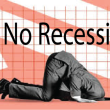Emerging Europe: Lessons from the boom-bust cycle
by Bas Bakker and Ajai Chopra via VoxEU.org
The crisis in Europe is more commonly used to refer to debt crises in southern Europe than elsewhere. This column focuses on central and eastern Europe, arguing that while the crisis there was triggered by external shocks, it is clear that domestic imbalances and policies also played a key role.
Almost unnoticed amidst the difficulties in Western Europe, the other half of the continent has begun to recover from the deepest slump in its post-transition period. The emerging economies in central and eastern Europe will grow by 3.75% this year and next – a relief after the 6% decline in 2009.
Why was the crisis so severe – and how do we avoid a repeat? This question has been posed with particular focus on Central and Eastern Europe several times on this site (see for example Berglöf 2009 and Darvas 2010). In recent research for the IMF Regional Economic Outlook (IMF 2010), we argue that while the crisis was triggered by external shocks, it is clear that domestic imbalances and policies also played a key role.
After Lehman Brothers defaulted in September 2008, global trade collapsed, capital inflows into the region plummeted, credit growth suddenly stopped, and domestic demand plunged. But pre-crisis domestic imbalances and policies made a difference in how these shocks affected each country’s economy. Some countries saw declines in gross domestic product similar to those in the Great Depression (Estonia, Latvia, Lithuania, Ukraine), while others avoided declines altogether (Albania, Poland).
Origins of the crisis
The seeds of the crisis were sown, in large part, in the five years before the crisis. Between 2003 and 2008, much of the region experienced a boom in bank credit, asset prices and domestic demand. This boom was fuelled and financed by large capital inflows.
With low interest rates in advanced countries, banks in Western Europe expanded aggressively into emerging Europe – where returns were higher. And, while the influx of capital boosted growth, it also led to rising imbalances and vulnerabilities.
- Current-account deficits increased to unprecedented levels in some countries, and asset prices and inflation accelerated.
- Substantial vulnerabilities emerged in bank and household balance sheets, particularly as much of the borrowing was in foreign currency.
The boom years had left much of the region addicted to foreign-financed credit growth, making it very vulnerable to a disruption in capital inflows (see figure 1)
Figure 1.

High cost experience
The first lesson of the crisis is one that is unfortunately not new. Boom-bust credit cycles can be very costly, so it essential to prevent credit booms from getting out of hand.
Indeed, countries that experienced the fastest credit growth during the boom years saw the deepest recessions. And it now appears that average GDP growth over the full business cycle in this group was no higher, and in some cases was lower, than in countries with more modest credit growth.











